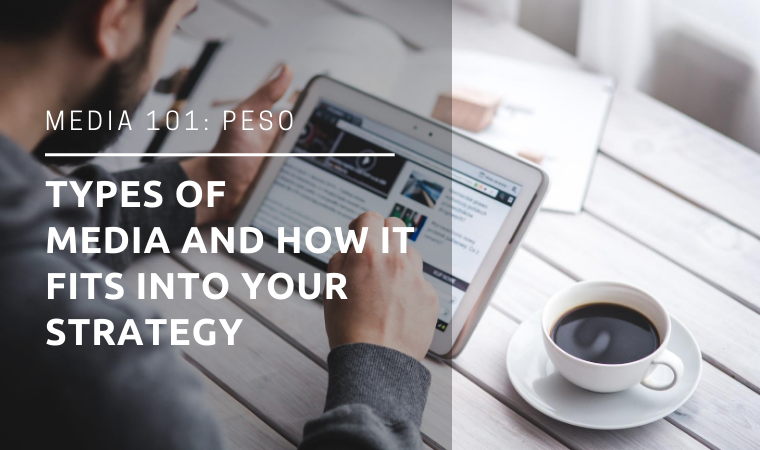
Media takes several forms, all of which can be important elements of a public relations strategy. Terms like paid, earned, shared, and owned are often associated with media when talking about creating a strategy with optimal reach. While not all aspects need to be a part of every communications plan, it’s important to understand each concept when developing your larger content strategy.
Paid Media
“Pay-to-play” is a frequent term used in the PR world. This refers to paid media, or content you pay to place in other outlets. While you can commonly influence the content, there are usually guidelines set by the publication or platform you are putting your content out on.
Examples of paid media include paid social media ads, “advertorials” or an ad in the style of an editorial article, and sponsored content. Paid media has its benefits, and can ensure strong placement of quality and targeted content to specific audiences, when executed strategically.
The downsides include cost and lack of longevity. As soon as you stop paying, your content goes away. If you are a paying regular contributor to a publication, once you stop paying you can no longer contribute articles. Another thing to note is that frequently, your content will note that it is sponsored or paid, and while this is a best practice widely considered an ethical mandate for paid content, it can impact how audiences engage with your content.
Earned Media
Perhaps the most traditional of the terms, earned media is content created by an external organization about you or your company that you didn’t pay for. When discussing media coverage, earned media is generally what is being referred to.
Examples of earned media include reviews, being featured in articles or roundups, general press coverage, awards, and backlinks. To get earned media, you need to do something newsworthy or offer insight that is relevant to the current news cycle or niche audience. That could be a study published by your organization that you then share with reporters, an expert who can provide insight to the upcoming elections, or a new product that just hit the market.
Earned media doesn’t happen on its own, however, and public relations professionals are constantly reaching out to reporters to secure it. Earned media has the most credibility, since the content is ideally created by someone without any personal bias towards whatever they are writing about. This is the heart of the industry, and even with types of media changing, earned media will always be a goal for any PR strategy.
Shared Media
Shared media is perhaps the most evolving type of media. In its simplest form, shared media is content that is shared between partners or on social media platforms. As social media evolves, so too does shared media. It can look like social media content (e.g. tweets, Instagram posts or stories, Facebook posts), user-generated content (Amazon reviews, blog posts) and partner materials created with another brand or person.
You may not realize it, but simply liking a brand’s post on Facebook or sharing a photo of your favorite ice cream on Instagram is shared media content. There is a record of your action, both on the brand’s account and your own profile. That is where exclusivity becomes fuzzy, as the content is owned by both you and the brand. It is shared between both of you: a combination of owned media by you and earned media by the brand.
Owned Media
This is content that you create and own yourself—in other words, on your organization’s owned online channels. It can be your website, blog, podcasts, reports or whitepapers—anything you create in-house.
The main benefit of owned media is that you have total control over it. Since you’ve created it, the message shared by the media is entirely crafted by you. Owned media can be a great tool for turning your voice into action, but its reach is much less than other types of media coverage.
When Worlds Collide
These media types are frequently leveraged together for powerful results. An example is a press release (owned media) shared through paid media (e.g. a distribution service like PR Newswire) to get earned media coverage. Reviews are earned media, but when a company uses those reviews as testimonials on their website or social media it then becomes owned or shared media.
Knowing the difference between each type of media, their strengths and weaknesses, and how they can work together, will get you the most reach for any public relations strategy. With the ever-changing media landscape, what each type of media looks like changes as well. Earned media now includes much more than a story in a newspaper—it could be a social media post, a mention in a podcast, or a quote in someone’s personal blog post. Knowing your basics for each type of media equips you with the tools to adapt along with the media landscape.